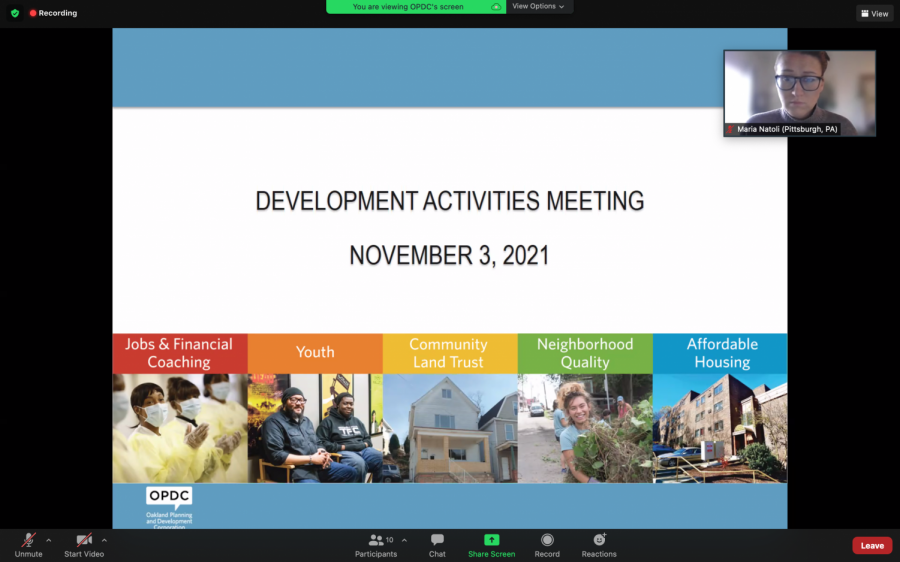OPDC discusses proposed Lawn and Ophelia parklet renovations
The Oakland Planning and Development Corp. met over Zoom on Wednesday evening to discuss Lawn and Ophelia parklet renovations and storm water management.
November 5, 2021
Current stormwater collection is “creating erosion” as water collects downhill from the Lawn and Ophelia parklet, local water officials said Wednesday. Because of this and the aging playground equipment currently there, they said it is time for a change.
“The park right now is in a little bit of a sadder condition,” Damon Weiss, the design engineer for the Lawn and Ophelia Stormwater Project, said. “You know, the playground equipment is aged and there’s not a lot of vegetation going on now.”
The Oakland Planning and Development Corp. held a meeting Wednesday evening on Zoom to discuss updated plans for the upcoming renovations of the Lawn and Ophelia parklet. The project is led by the Pittsburgh Water and Sewer Authority. The meeting served as the official Development Activities Meeting before the project is pitched to Pittsburgh’s Art Commission in December. The current plan is to start construction in spring of 2022.
According to Weiss, the concept behind this project was to install “concrete bump outs” that would collect rainwater and take it to a “central rain garden,” while also preserving the existing landscape around the perimeter of the parklet. He said the goal was to keep the park low maintenance, but inviting.
“The original concept probably dates back to 2015 or so. The City and PWSA collaborated on a vision for this park,” Weiss said. “The original concept was to pick up water in these concrete bump outs that then took water into a central rain garden, while also preserving some of the existing landscape around the perimeter, and just creating an overall inviting but low maintenance and passive recreation space.”
Weiss said PWSA presented the original design presented in 2018, and some features were more for “amenity function” than “stormwater function.” When the PWSA transitioned to Pennsylvania’s Public Utility Commission oversight in 2018, the designs were altered to remove some features, such as the stormwater bump out they planned to implement along Ophelia Street. PWSA presented a “scaled back” version of the plan in February and September to residents of Oakcliffe to gather community feedback on these changes before Wednesday’s meeting.
“Some of those things were evaluated sort of at a different scale, and because they were less mission driven, some of those things were taken out,” Weiss said. “But the core functionality and the core vision in the park remains the same.”
Maria Natoli, the project manager, said many of these changes to the existing park are meant to prevent overflow and help collect stormwater efficiently.
“These changes include things like a rain garden located within the parklet, storage for the water, landscaping, surface paths and a couple other things,” Natoli said. “So overall this project is really important for stormwater management, and it’s going to reduce flows going into the combined sewer system, which will ultimately decrease overflows in sewer backups.”
Wanda Wilson, the OPDC executive director, asked if the playground equipment that is currently in the park area will be removed as a part of the project.
“Do we know if it would be the same contractor that does the demolition of the playground, or is that separate from your contract?” Wilson said.
According to Weiss, the rain garden will take its place.
“I believe the City is going to be demolishing the playground themselves,” Weiss said. “That’s one of the benefits of working closely with the City … And I think because the City was already planning on demolishing that equipment and decommissioning the park overall, that became one of their items that they’re providing.”
As part of the project, Weiss said many new plants — “perennials, groundcover, shrubs and trees” — will be planted in the rain garden to add color to the proposed area.
“It’s going to be a pretty vibrant and well-vegetated space overall,” Weiss said.








